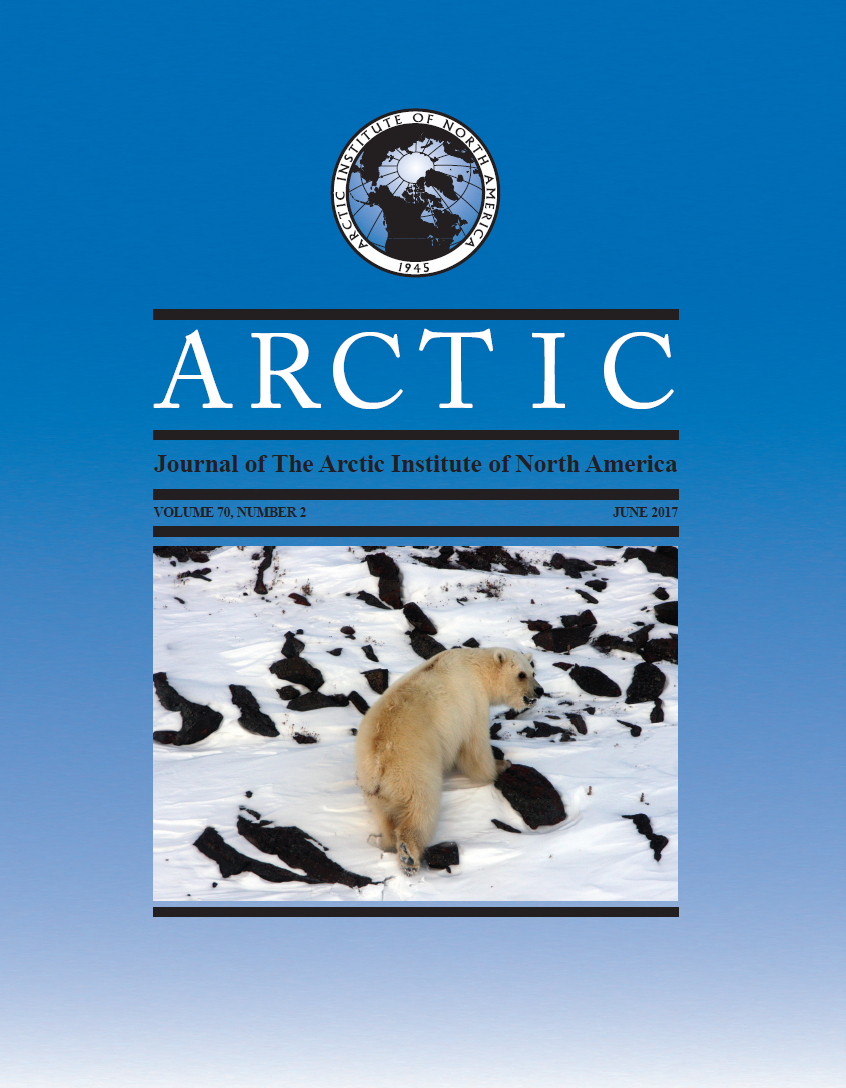Long-Distance Movement of a Female Polar Bear from Canada to Russia
DOI :
https://doi.org/10.14430/arctic4641Mots-clés :
ours polaire, flux génétique, domaine vital, déplacement sur de longues distances, modèle de mouvement du pont brownien, polygone convexe minimum, changement climatique, sud de la mer de Beaufort, mer des Tchouktches, Ursus maritimusRésumé
L’ours polaire (Ursus maritimus) démontre sa fidélité à de grandes régions géographiques, et ses déplacements subissent l’influence de la répartition de la glace de mer. Les sous-populations d’ours polaires sont modérément distinctes les unes des autres, et les déplacements sur de longues distances entre les sous-populations sont rares. Nous décrivons et analysons les déplacements d’une ourse polaire suivie par télémétrie satellitaire pendant 798 jours à compter du printemps 2009. Cette femelle s’est déplacée sur une distance exceptionnellement longue (11 686 km au total) depuis la glace de mer au large du territoire du Yukon, au Canada (sous-population du sud de la mer de Beaufort) jusqu’à l’île Wrangel, en Russie (sous-population de la mer des Tchouktches). Comparativement à d’autres ours polaires visés par cette étude, cette ourse s’est déplacée plus loin et plus vite, et elle avait un domaine vital beaucoup plus vaste au cours de sa première année. De plus, le calcul de la taille de son domaine vital effectué au moyen de deux méthodes différentes a permis de constater que la méthode fréquemment utilisée du polygone convexe minimum donnait lieu à la surestimation du domaine vital comparativement au modèle de mouvement moins faussé du pont brownien. Le déplacement de cette ourse sur de longues distances était inhabituel et il permet d’obtenir des preuves supplémentaires au sujet du flux génétique entre les sous-populations. La surveillance des déplacements des ours polaires est utile dans le cadre du suivi de tels événements, ce qui est particulièrement important en ce moment, car la perte de glace de mer attribuable au changement climatique peut avoir des effets sur les frontières des sous-populations et la gestion des influences.


